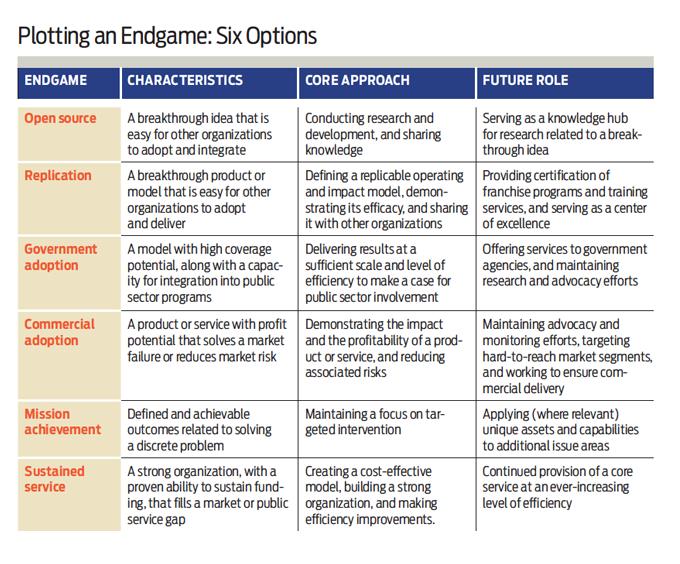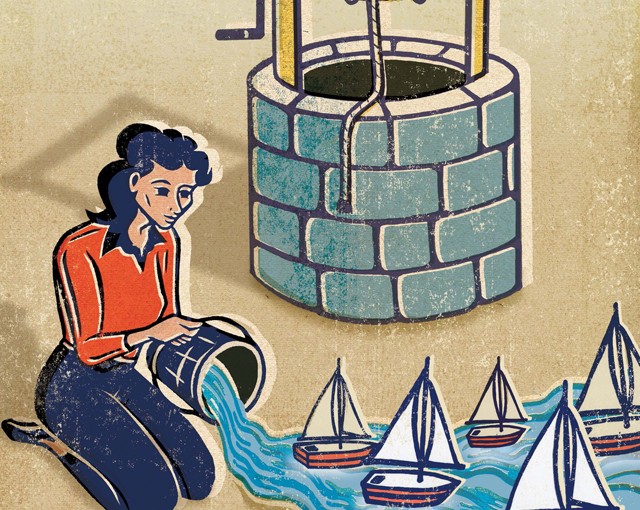The development of universal kindergarten in the United States at the turn of the 20th century provides a good case study in how the government adoption model works:
- Private charities, orphanages, and parochial schools ran the first kindergartens in the country.
- After boards of education started recognizing the developmental benefits of early education, they began to fold kindergarten classes into existing public school systems.
- By World War I, all of the largest American urban school systems included kindergarten, and kindergarten students in public schools outnumbered those in private schools by almost 19 to 1
In the government adoption endgame, a nonprofit proves its concept and demonstrates that its intervention can be delivered at a significant scale.
- Then it mounts an advocacy effort to influence policy and budget decisions.
- Once government adoption occurs, the nonprofit can continue to serve as an advisor or service provider to government agencies.

The scale of delivery required to confront many social problems is high enough that government involvement often becomes indispensable.

via What’s Your Endgame? | Stanford Social Innovation Review.
